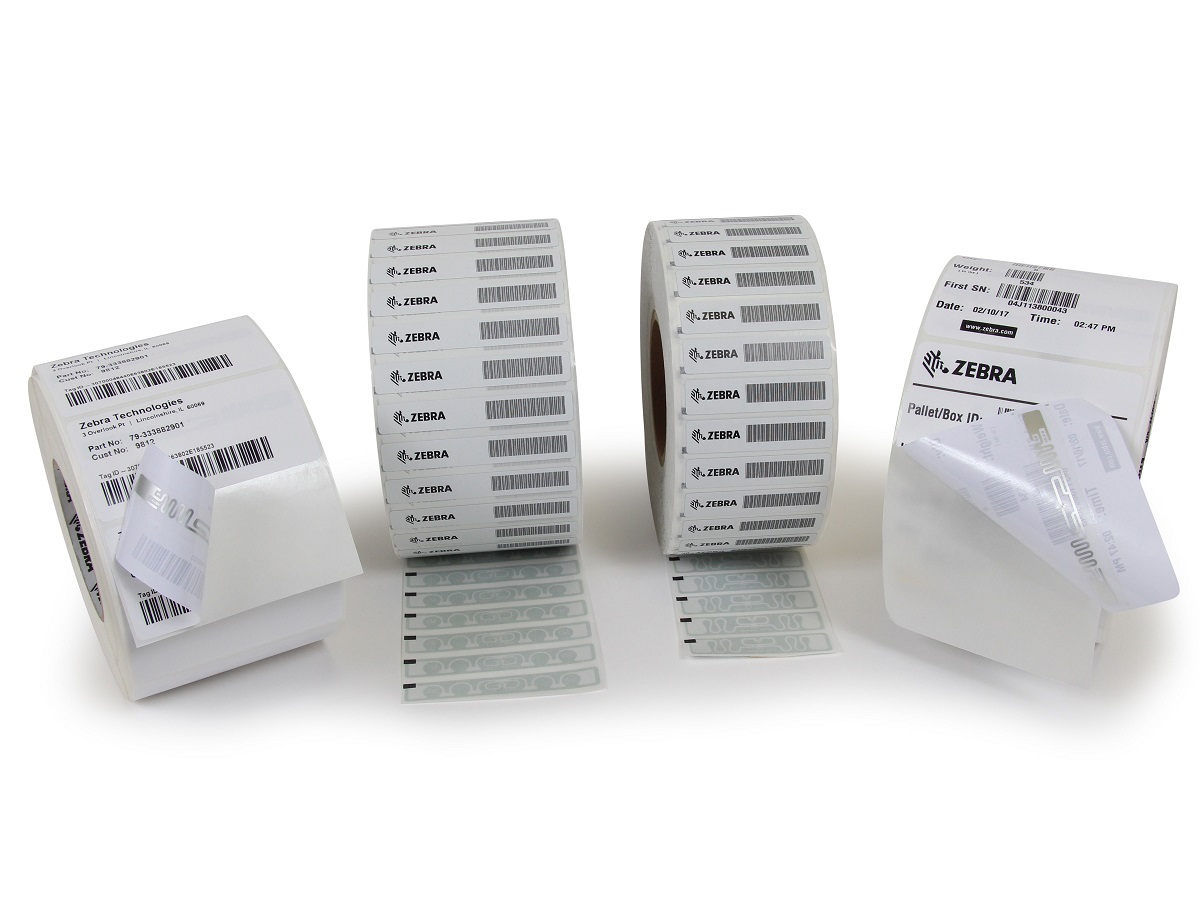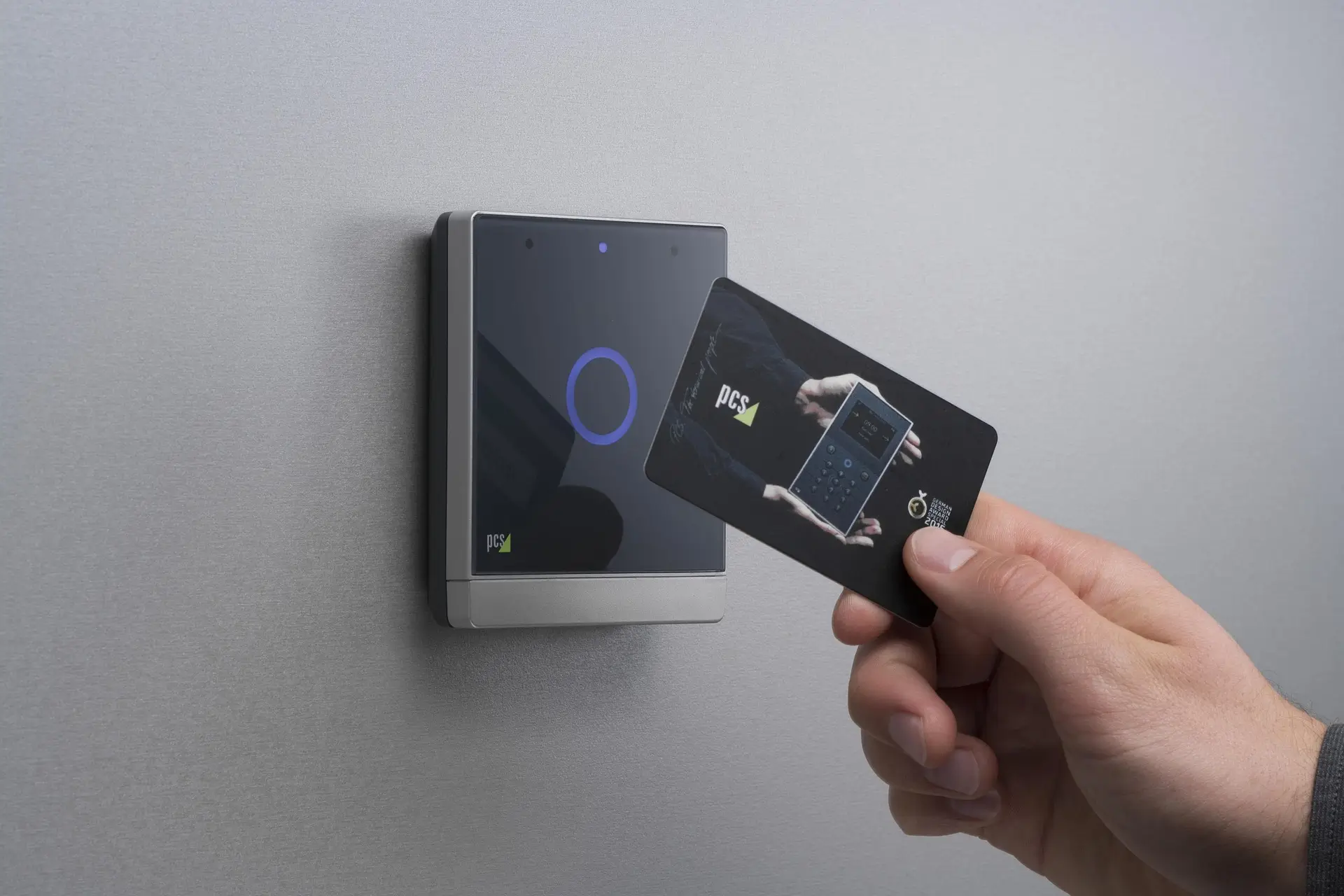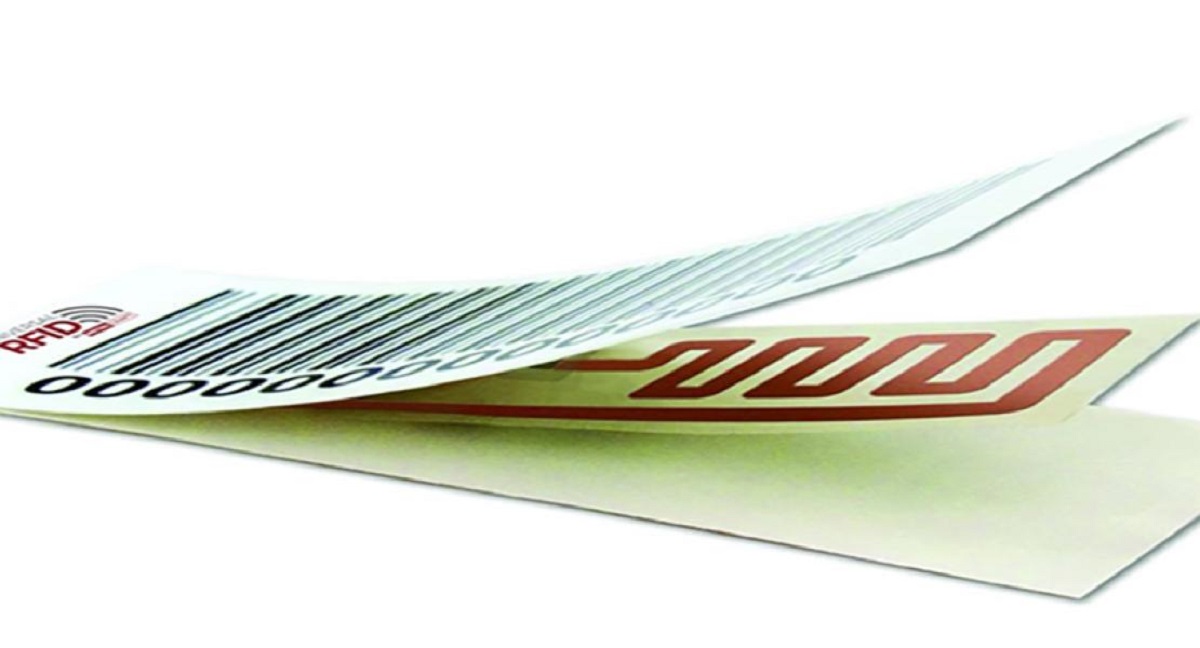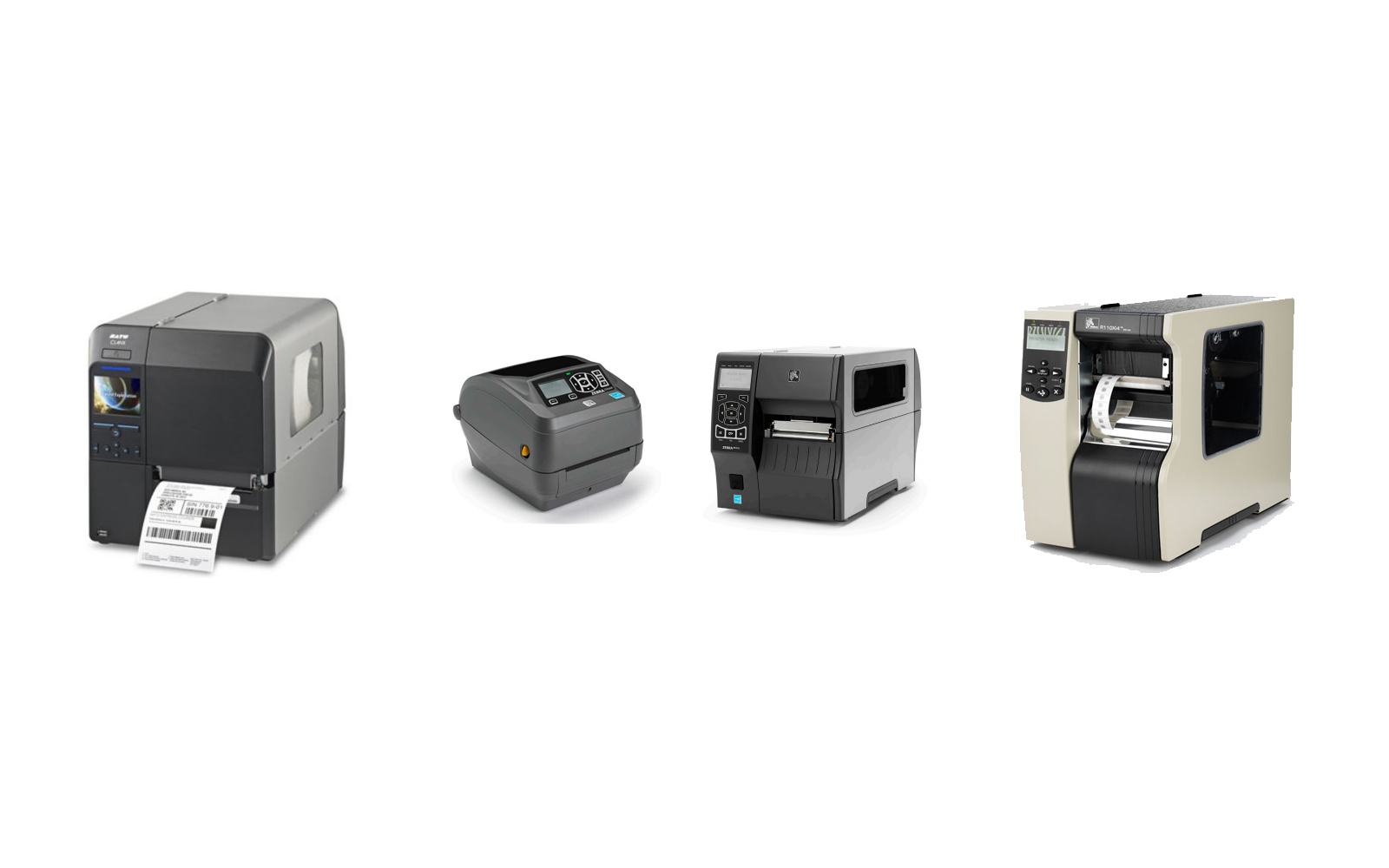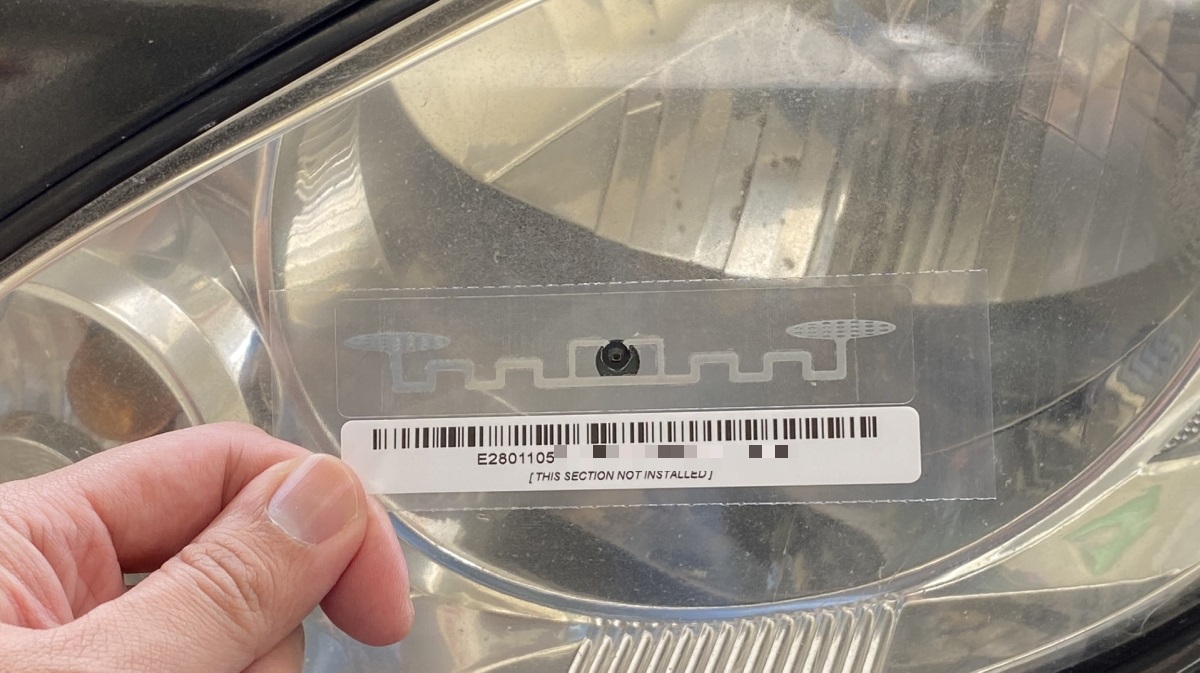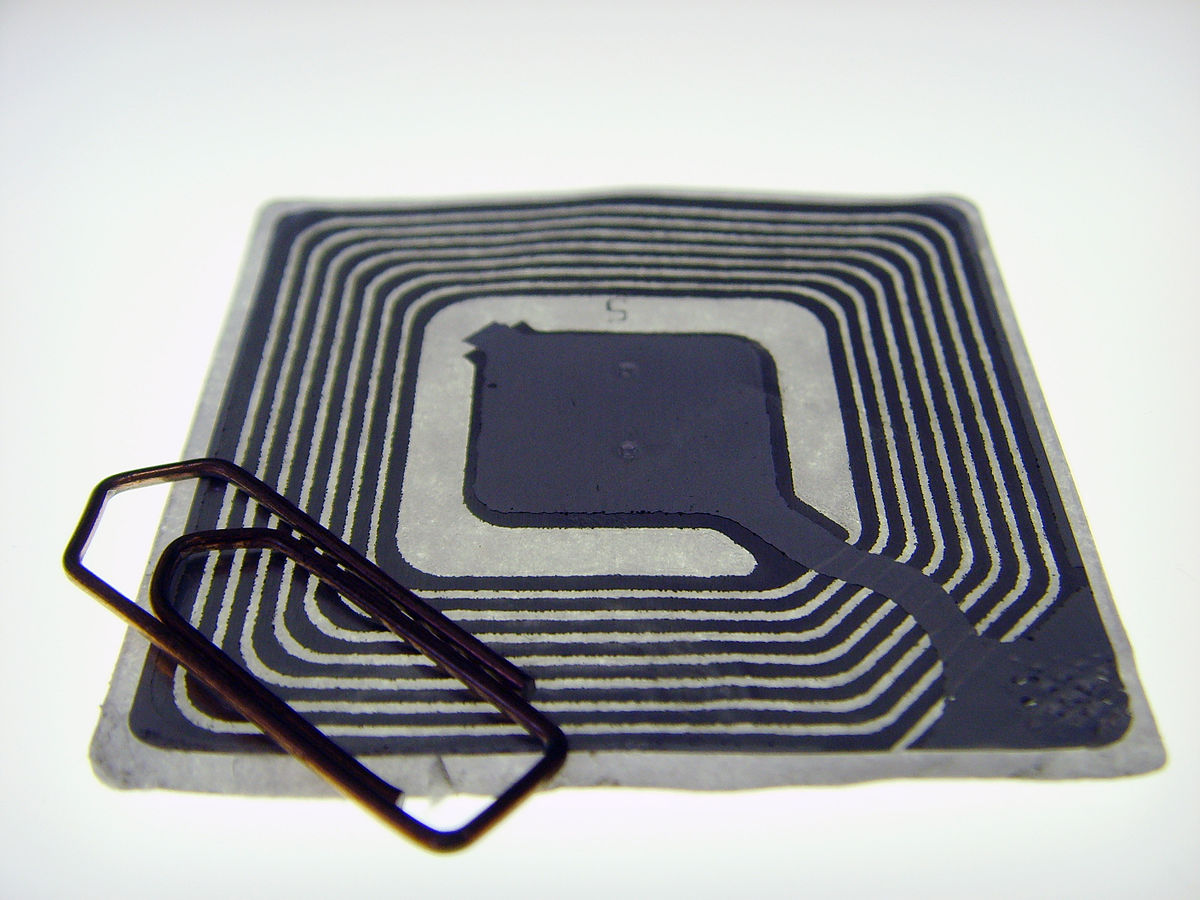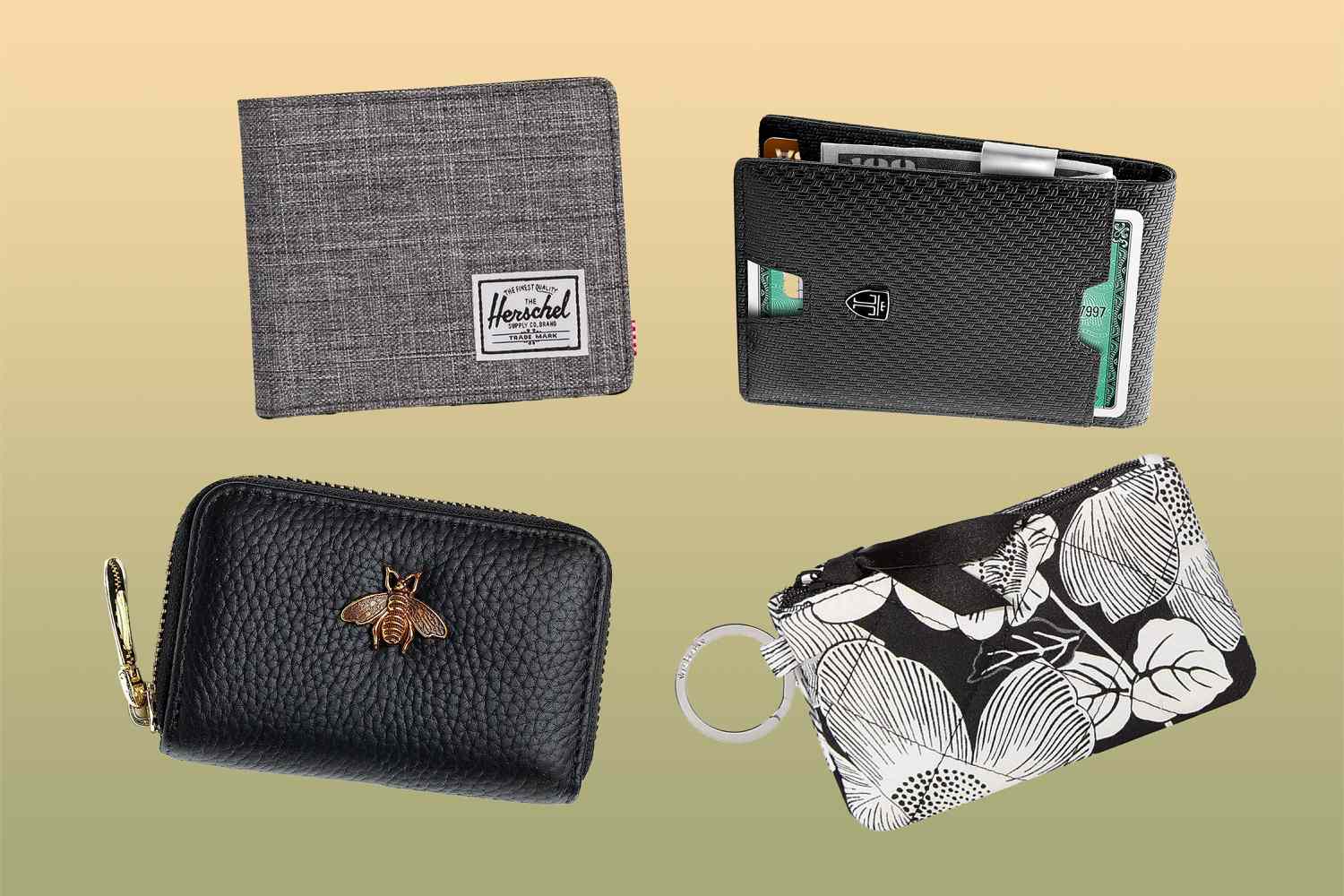Introduction
Welcome to the world of RFID labels! In the ever-evolving field of technology, RFID (Radio Frequency Identification) has emerged as a game-changing innovation. RFID labels have become a crucial tool for businesses in various industries, enabling efficient tracking and management of products, assets, and inventory.
RFID technology operates by utilizing radio waves to transfer data between a tag or label and a reader. Unlike traditional barcode labels, which require line-of-sight scanning, RFID labels can be read from a distance and provide real-time information. This has opened up a world of possibilities and streamlined operations in sectors such as logistics, retail, healthcare, and manufacturing.
How exactly do RFID labels work? What components make up an RFID label? What types of RFID labels are available? In this article, we will delve into the intricacies of RFID labels, explore their benefits and applications, and consider important factors to keep in mind when implementing RFID technology.
Whether you’re a business owner, a supply chain manager, or simply curious about the latest technological advancements, understanding RFID labels is essential in today’s digital age. So, let’s dive in and unlock the secrets of RFID technology!
What is RFID?
RFID, short for Radio Frequency Identification, is a technology that allows for automatic tracking and identification of objects using radio waves. It consists of two main components: RFID tags or labels and RFID readers. These components work together to exchange data wirelessly, eliminating the need for manual scanning or line-of-sight contact.
The RFID system operates by having an RFID tag or label attached to an object or embedded within a product or packaging. The tag contains a unique identifier and can store additional data such as product details, manufacturing information, or tracking codes. When the RFID tag comes within range of an RFID reader, it sends a signal containing its information using radio waves.
RFID tags come in various forms, including passive, active, and semi-passive. Passive RFID tags do not have an internal power source and rely on the energy emitted by the RFID reader to transmit information. Active RFID tags, on the other hand, have their own power source and can actively transmit data without relying on an external power supply. Semi-passive RFID tags combine elements of both passive and active tags.
The RFID reader, also known as an interrogator, is a device that emits radio waves and captures the information sent by the RFID tag. The reader decodes the data from the tag and sends it to a central system or database for processing and analysis. RFID readers can be stationary, handheld, or integrated into other devices such as smartphones or tablets.
RFID technology offers several advantages over traditional barcode systems. Unlike barcodes, RFID tags can be read from a distance and do not require direct line-of-sight contact with the reader. This results in faster and more efficient data capture, as multiple tags can be read simultaneously. Additionally, RFID tags are more durable and can withstand harsh environmental conditions such as heat, moisture, and dust.
The applications of RFID technology are vast and span across various industries. In retail, RFID enables accurate inventory management, reduces stockouts, and enhances the customer shopping experience. In healthcare, RFID helps in tracking medical equipment, ensuring patient safety, and managing medication inventory. In logistics and supply chain management, RFID improves tracking and traceability, reduces theft, and streamlines the overall operation.
As technology continues to evolve, RFID has become an integral part of many businesses, offering enhanced efficiency, accuracy, and visibility. With its ability to automate and streamline processes, RFID is transforming industries and opening up new opportunities for growth and innovation.
How do RFID labels work?
RFID labels, also known as RFID tags, operate on the principle of using radio waves to transmit and receive data between the tag and the reader. These labels consist of a microchip and an antenna, which work together to communicate wirelessly.
When an RFID reader emits a radio signal, it activates the RFID label within its range. The label’s microchip receives the signal and generates a response by sending back encoded data stored on the chip. This process is known as backscatter modulation, where the label reflects a portion of the radio signal back to the reader with its encoded information.
There are different types of RFID systems, including passive, active, and semi-passive. In a passive RFID system, the RFID label does not have its own power source. Instead, it utilizes the energy emitted by the reader to power the microchip and transmit data. When the RFID label comes into the range of the reader’s radio signal, it harvests the energy and uses it to encode and transmit its unique identifier and any additional data.
Active RFID systems, on the other hand, use RFID labels that have their own power source. These labels actively transmit data at regular intervals, regardless of whether they are near a reader or not. This allows for continuous tracking and monitoring of objects or assets, even in dynamic environments.
Semi-passive RFID systems combine elements of both passive and active RFID. The RFID label is powered by an internal battery, enabling it to provide additional functionality beyond just responding to the reader’s signal. For example, semi-passive RFID labels can include temperature sensors, accelerometers, or other sensors to capture additional data about the tagged objects.
The range and read speed of RFID labels can vary based on factors such as the frequency used, the power of the reader, and the environment. Generally, high-frequency RFID systems have a shorter range, typically a few meters, and are commonly used in applications such as access control or library book tracking. In contrast, ultra-high-frequency RFID systems can have a range of up to several meters or even tens of meters, making them suitable for applications like inventory management or asset tracking.
RFID labels can be applied or embedded in various forms, depending on the specific needs of the application. They can be attached to surfaces using adhesive backing or incorporated into flexible materials like labels, tags, or even textiles. RFID labels offer excellent durability and can withstand challenging conditions such as extreme temperatures, moisture, and vibrations.
The use of RFID labels provides businesses with real-time visibility, enhanced accuracy, and improved efficiency in managing assets, tracking inventory, and securing valuable items. By automating data capture and removing the need for manual scanning, RFID labels simplify processes, reduce errors, and enable better decision-making.
In the next section, we will explore the components that make up an RFID label and learn about the different types available.
Components of an RFID label
An RFID label consists of several key components that work together to enable wireless communication and data transmission. Understanding these components is essential in harnessing the full potential of RFID technology. Let’s explore the main elements that make up an RFID label:
- Microchip: The microchip, also known as the integrated circuit (IC) or transponder, is the brain of the RFID label. It contains the unique identifier and additional data that can be programmed and stored. The microchip is responsible for processing the signals received from the RFID reader and generating a response with the encoded information.
- Antenna: The antenna is a critical part of the RFID label as it enables wireless communication. It sends and receives radio waves, allowing the RFID tag to exchange data with the reader. The design and size of the antenna can vary depending on the specific application and frequency of the RFID system.
- Substrate: The substrate serves as the physical base or material on which the microchip and antenna are mounted. It provides stability and protection to the components of the RFID label. Common substrate materials include paper, plastic, or flexible materials like polyester or polypropylene.
- Adhesive: In many cases, RFID labels have an adhesive backing that allows them to be easily attached to various surfaces. The adhesive ensures a secure and durable bond between the label and the object it is applied to, whether it’s a product, asset, or inventory item.
- Encapsulation: Encapsulation, also known as overmolding or lamination, involves adding a protective layer over the microchip and antenna. This layer helps shield the components from environmental factors like moisture, dust, or physical damage. Encapsulation can be done using materials such as epoxy or plastic, enhancing the overall durability and longevity of the RFID label.
It’s important to note that the components of an RFID label can vary depending on the type and form factor of the label. For instance, RFID labels can be in the form of a sticker, a hangtag, a card, or even embedded within products or packaging. The size, shape, and materials used can be customized to suit specific applications and industry requirements.
Additionally, some RFID labels may include additional features or sensors, such as temperature sensors, humidity sensors, or tamper-evident features. These elements provide enhanced functionality and allow businesses to gather valuable data beyond just identification and tracking.
Now that we have explored the components of an RFID label, let’s move on to the next section, where we will discuss the various types of RFID labels available and their specific applications.
Types of RFID labels
RFID labels come in various types, each designed to suit different applications and environments. Understanding the different types of RFID labels can help businesses select the most appropriate solution for their specific needs. Here are the main types of RFID labels:
- Passive RFID labels: Passive RFID labels are the most common type and do not have their own power source. They rely on the energy emitted by the RFID reader to power the microchip. When the reader’s signal activates the label, it responds by transmitting its stored data. Passive RFID labels are cost-effective, lightweight, and suitable for applications where close-range reading is sufficient.
- Active RFID labels: Active RFID labels have their own internal power source, typically a battery. They actively transmit data at predefined intervals, regardless of whether they are within range of an RFID reader or not. Active RFID labels provide a longer read range and real-time tracking capabilities. They are commonly used in applications that require continuous monitoring and tracking, such as asset management and high-value item tracking.
- Semi-passive RFID labels: Semi-passive or battery-assisted passive (BAP) RFID labels have a small internal power source that assists with specific functionality, such as sensor measurements or extended read range. The battery powers these additional features while still relying on the RFID reader to provide energy for transmitting data. Semi-passive RFID labels offer a balance between passive and active tags, providing greater functionality than passive tags without the continuous transmission of active tags.
- High-frequency (HF) RFID labels: HF RFID labels operate at frequencies around 13.56 MHz. These labels have a read range of a few centimeters to a meter, making them suitable for applications that require close-range identification, such as access control, ticketing, or payment systems.
- Ultra-high-frequency (UHF) RFID labels: UHF RFID labels operate at frequencies ranging from 860 to 960 MHz. They offer a longer read range, typically several meters or more, and are commonly used in applications like inventory management, supply chain logistics, and retail. UHF RFID labels enable rapid data collection and can handle multiple simultaneous tag reads.
- Microwave RFID labels: Microwave RFID labels operate at higher frequencies, typically in the microwave range of 2.45 GHz. These labels provide a longer read range, even up to tens of meters. Microwave RFID labels are used in applications such as vehicle identification, toll collection, or container tracking where long-range reading is required.
RFID labels also come in various form factors, including adhesive labels, hangtags, wristbands, key fobs, and even embedded in products or packaging. The specific form factor depends on the intended use and the object or asset to be tagged.
Choosing the right type of RFID label involves considering factors such as read range, power requirements, application environment, and cost. By understanding the capabilities and limitations of each type, businesses can implement RFID technology effectively and optimize their operations.
In the next section, we will explore the benefits of using RFID labels and how they can transform business processes.
Benefits of using RFID labels
RFID labels offer several significant advantages over traditional tracking and identification methods. Implementing RFID technology can bring transformative benefits to businesses across various industries. Let’s explore the key benefits of using RFID labels:
- Improved efficiency: RFID labels enable quick and automated data capture. Unlike barcode scanning, which requires line-of-sight contact, RFID labels can be read from a distance and multiple tags can be scanned simultaneously. This results in faster and more efficient inventory management, asset tracking, and supply chain operations.
- Real-time visibility: RFID labels provide real-time tracking and visibility of tagged objects or assets. Businesses can accurately locate and monitor items throughout their journey, minimizing the risk of loss, theft, or misplacement. Real-time visibility leads to better decision-making, improved customer service, and increased operational efficiency.
- Enhanced accuracy: RFID labels significantly reduce errors associated with manual data entry and barcode scanning. The ability to automatically capture and update data ensures accurate and up-to-date information throughout the supply chain. This results in improved inventory accuracy, reduced stockouts, and better overall data integrity.
- Streamlined operations: With RFID labels, businesses can streamline their processes and eliminate time-consuming manual tasks. Automated data capture and inventory reconciliation enable faster stock replenishment, efficient order fulfillment, and simplified asset management. This translates into cost savings, improved productivity, and better resource utilization.
- Increased security: RFID labels can be used to enhance security measures and prevent unauthorized access. They can be integrated with access control systems, ensuring only authorized personnel can enter restricted areas. Additionally, RFID labels enable reliable authentication and anti-counterfeiting features, safeguarding products and brand reputation.
- Better customer experience: RFID labels contribute to a seamless and improved customer experience. In retail, for example, RFID-enabled inventory management minimizes stockouts, ensures accurate pricing, and enables swift checkout processes. This results in happier customers, reduced waiting times, and increased customer satisfaction.
- Data insights: RFID labels provide valuable data insights that can be used for analysis and optimization. By tracking the movement of items, businesses can identify bottlenecks, inefficiencies, and patterns in their operations. This data-driven approach enables informed decision-making, process improvements, and effective demand forecasting.
RFID labels offer a multitude of benefits that increase operational efficiency, accuracy, and customer satisfaction. As businesses continue to adopt RFID technology, the advantages become more evident, unlocking new possibilities and driving innovation.
In the next section, we will explore the diverse applications of RFID labels across different industries.
Applications of RFID labels
RFID labels have a wide range of applications across various industries, revolutionizing many aspects of business operations. Let’s explore some of the key applications of RFID labels:
- Retail: RFID labels have transformed the retail industry by providing accurate and real-time inventory management. Retailers can use RFID labels to track stock levels, automate replenishment processes, and improve accuracy during stocktaking. RFID-enabled checkout systems can streamline the customer experience and reduce wait times.
- Logistics and supply chain: RFID labels play a crucial role in logistics and supply chain management. They enable end-to-end tracking and traceability of goods, improving visibility and reducing errors. RFID labels can be used to monitor shipments, optimize routing, and enhance the efficiency of warehouse operations.
- Healthcare: In the healthcare industry, RFID labels help improve patient safety, streamline asset management, and enhance medication tracking. RFID labels on medical equipment enable quick and accurate asset identification, reducing the risk of lost or misplaced items. RFID-enabled medication management systems ensure the right medication is administered to the right patient.
- Manufacturing: RFID labels enhance manufacturing processes by enabling better inventory control, optimized workflow, and improved quality control. They can be used to track work-in-progress items, monitor production line efficiency, and ensure the use of correct components. RFID labels also facilitate product authentication and anti-counterfeiting measures.
- Agriculture: RFID labels are increasingly used in the agriculture industry for livestock and crop management. They can be attached to animals for easy identification, tracking, and health monitoring. RFID labels also aid in the tracking and tracing of agricultural products, ensuring quality control and authenticity along the supply chain.
- Asset management: RFID labels are valuable tools for asset tracking and management. They enable businesses to monitor the location, status, and maintenance history of assets such as vehicles, machinery, and tools. RFID labels improve asset utilization, reduce loss and theft, and streamline maintenance processes.
- Access control and security: RFID labels are used for access control and security purposes in various settings. They can be integrated with access control systems to grant or restrict access to authorized personnel. RFID labels also enable secure identification and authentication, protecting sensitive areas, assets, or information.
- Waste management: RFID labels find application in waste management processes, facilitating efficient waste collection and disposal. RFID-enabled bins or containers help monitor waste levels, optimize collection routes, and track recycling efforts. This improves waste management practices and promotes sustainable initiatives.
These are just a few examples of the diverse applications of RFID labels. RFID technology continues to expand its reach, influencing industries and enabling new possibilities for better operational efficiency, increased security, and enhanced customer experiences.
In the next section, we will discuss some considerations that businesses should keep in mind when implementing RFID labels.
Considerations when using RFID labels
Utilizing RFID labels can bring significant benefits to businesses, but it’s important to consider certain factors to ensure successful implementation. Here are some key considerations when using RFID labels:
- Cost: The cost of RFID labels and associated hardware should be evaluated in relation to the expected benefits and return on investment. While RFID technology has become more affordable over time, businesses should consider the upfront investment, ongoing maintenance costs, and scalability as they implement RFID solutions.
- Read range and environment: The read range of RFID labels depends on various factors, including the frequency used and the surrounding environment. Understanding the specific requirements of the application and the environmental conditions is crucial to select the appropriate RFID labels. For instance, certain materials or environments, such as metal or liquids, can interfere with RF signals and impact performance.
- Data privacy and security: RFID labels transmit and store data, raising concerns about data privacy and security. It’s important to implement appropriate security measures to protect sensitive information. This may include encryption techniques, access control protocols, and data management practices that comply with relevant regulations and standards.
- Integration with existing systems: Businesses should consider how RFID labels will integrate with their existing systems, including inventory management software, enterprise resource planning (ERP) systems, and other backend platforms. Integration capabilities and compatibility should be assessed to ensure data flows smoothly between systems and to enable seamless process automation.
- Tag placement and orientation: Proper placement and orientation of RFID labels on objects or assets can impact readability. It’s crucial to follow best practices and guidelines provided by the RFID label manufacturer to ensure optimal performance. Factors such as tag orientation, distance to metal or liquids, and tag-to-reader alignment should be considered to maximize read rates.
- Training and change management: Training employees and stakeholders on the use and benefits of RFID technology is essential. Change management strategies should be implemented to ensure smooth adoption and to address any resistance or concerns. Clear communication and education can empower users and facilitate the successful integration of RFID labels into existing workflows.
- Compliance and regulations: Businesses operating in certain industries, such as healthcare or food and beverage, may need to comply with specific regulations regarding RFID technology. It’s important to understand and adhere to applicable regulations, such as data protection requirements and labeling standards, when implementing RFID labels.
By considering these factors, businesses can overcome potential challenges and optimize the implementation of RFID labels. Thorough planning, careful evaluation, and collaboration with RFID solution providers can ensure a successful integration and maximize the benefits of RFID technology.
In the concluding section, we will recap the key points covered in this article about RFID labels.
Conclusion
RFID labels have revolutionized the way businesses track, manage, and identify objects and assets. Through the use of radio waves, RFID technology enables efficient and automated data capture, improving operational efficiency, accuracy, and visibility.
In this article, we explored the fundamentals of RFID technology, including how RFID labels work and the components that make up an RFID label. We discussed the various types of RFID labels, such as passive, active, and semi-passive, and their applications in different industries.
Furthermore, we highlighted the benefits of using RFID labels, including improved efficiency, real-time visibility, enhanced accuracy, and streamlined operations. We discussed the diverse applications of RFID labels, ranging from retail and healthcare to logistics and asset management.
While implementing RFID labels, businesses need to consider factors such as cost, read range, data privacy, integration, tag placement, and compliance with regulations. These considerations are crucial in ensuring successful implementation and maximizing the benefits of RFID technology.
As RFID technology continues to evolve, businesses have the opportunity to leverage RFID labels to optimize their operations, enhance customer experiences, and gain valuable insights from data collected throughout the supply chain.
In conclusion, RFID labels are a powerful tool for businesses across industries, revolutionizing processes, and driving innovation. By harnessing the capabilities of RFID technology, businesses can unlock new levels of efficiency, accuracy, and productivity, propelling them towards success in the digital age.







